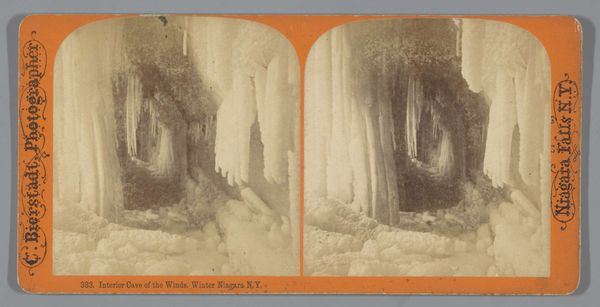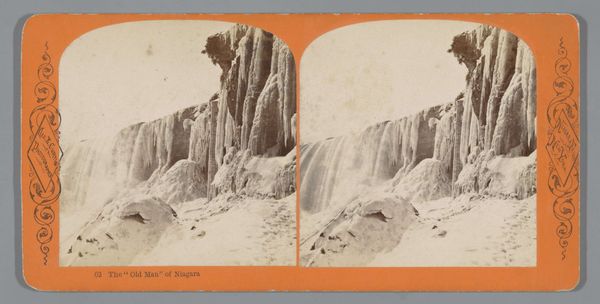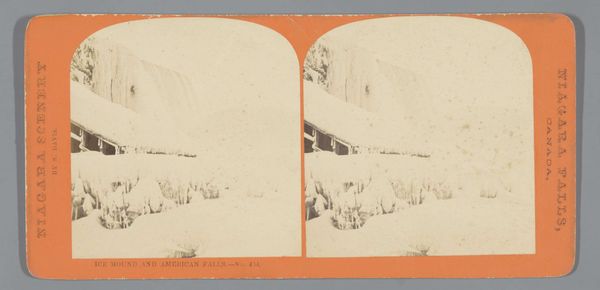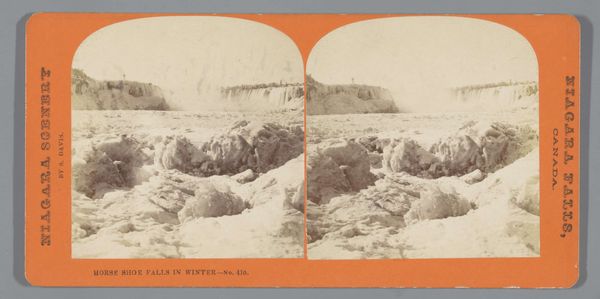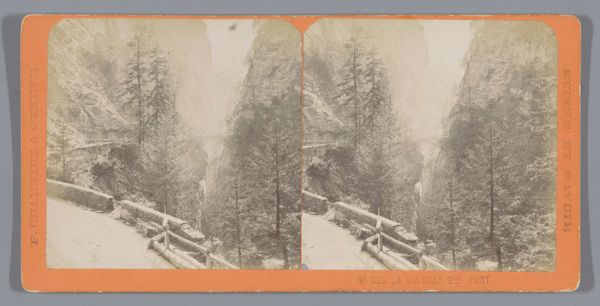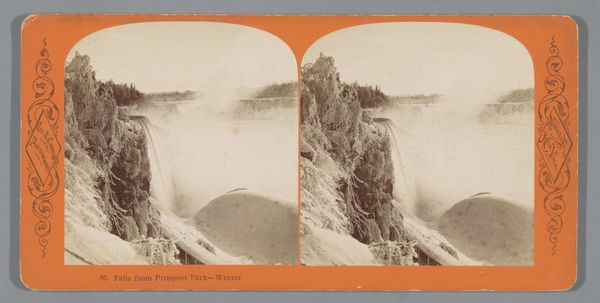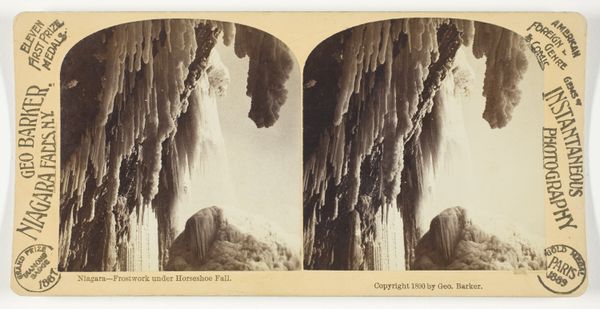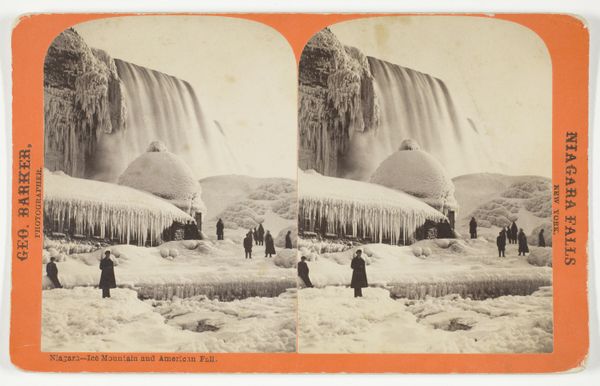
photography
#
pictorialism
#
landscape
#
photography
#
realism
Dimensions: height 84 mm, width 174 mm
Copyright: Rijks Museum: Open Domain
Editor: We’re looking at a photograph by George E. Curtis titled *IJsformaties onder Table Rock nabij de Niagarawatervallen*, or Ice Formations Under Table Rock Near Niagara Falls, created sometime between 1866 and 1910. The tones are quite stark. The framing makes me feel claustrophobic almost, and also, rather cold. What do you see in this piece? Curator: Beyond the obvious representation of a frozen Niagara, I see a complex dialogue concerning humanity's relationship with nature and power dynamics that existed during the rise of tourism in the late 19th century. The framing, as you noted, creates a feeling of confinement, suggesting a perceived threat from the natural world. Consider how landscape photography during this era was used to both promote and control narratives about American identity and expansion. Editor: Control narratives? What do you mean by that? Curator: This photograph, presented as a natural wonder, simultaneously highlights the exploitation and commodification of nature for tourism. It echoes broader themes of the time – industrial progress versus preservation. Who benefitted from access to and control of these sites, and who was excluded? Does it reinforce any existing social hierarchies related to class or race at the time? These are some critical perspectives we can apply. Editor: I hadn't thought about it that way. I was just thinking about the pretty ice formations. Curator: Precisely! This image offers a space to consider both the aesthetic appreciation and the political implications inherent in landscape photography. Thinking about who profits and at whose expense is central to viewing such photographs critically. Editor: I guess even a photo of ice can tell a bigger story about society and its values. Curator: Absolutely. Art is never created in a vacuum. By exploring the historical and social contexts, we can better understand both the artist's intentions and the work's lasting impact.
Comments
No comments
Be the first to comment and join the conversation on the ultimate creative platform.

